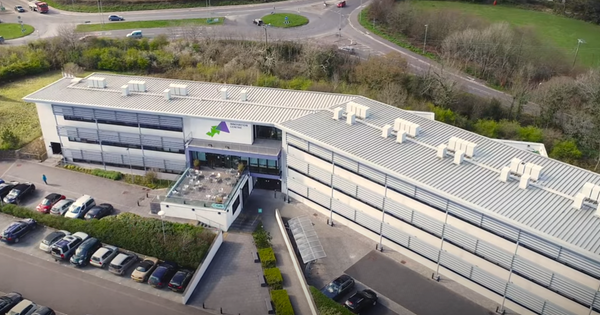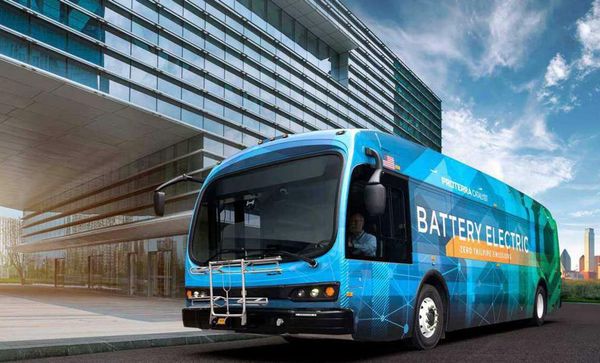
On the face of it, the recent news that California will ban the sale of petrol cars in 2035 and favor electric vehicles is a positive development toward a greener, safer, and more sustainable world. And yet this announcement brings as many questions as answers, not least whether electric vehicles really are the best and easiest solution to the climate crisis.
The reality is far more complicated. The electrification of transport and the construction of new clean energy like solar are vital components of curing the carbon problem. But they come with their own novel and potentially show-stopping environmental and ethical costs, and these must urgently be grappled with by those of us who call for climate action at a rapid rate.
Everyone who expected climate policy to cool in the year of COVID-19 has been sorely disappointed. A flurry of announcements is increasing as the end of the year approaches, mostly relating to either general climate ambition, the accelerated deployment of mature technologies, or innovation to create new ones.
China’s plan to hit net zero by 2060 took the climate policy wonks by surprise. The European Union’s new climate ambitions are locked in political struggles but will be solidified soon. The materials required for new technologies, such as lithium and copper, are shaping maps of influence. Even one of the poorest nations on the planet, Afghanistan, is being drawn into the geopolitical struggle over these resources.
A constant barrage of reports from corporations, consultancies, and agencies around the world all point to a single requirement for decarbonizing our species: machines made from materials mined from the Earth’s crust. Oil and gas major BP’s recent Energy Outlook report, a conservative take on the transition, predicts a tripling of output from new wind and solar (in line with most other net zero emission forecasts of this type):
Curing the carbon problem raises a plethora of related mining and resource challenges that must be grappled with before they become unmanageable. The International Energy Agency’s (IEA) recent Energy Technology Report suggests global lithium production will grow twice as fast in a lower emissions scenario due to the manufacturing of batteries for cars and clean power. The pathway to solving climate is, potentially, lined with lithium and copper, and far too few climate and environment groups are successfully taking the lead in dealing with its problems.
The Institute for Sustainable Futures at the University of Technology in Sydney, Australia released a striking report in 2019 that outlined the ways in which the transition from fossil fuels to sustainable energy sources could be done ethically and without causing unnecessary damage to the planet. It argued that recycling was one of the best solutions to the surge in demand for electric car battery metals, such as lithium, cobalt, nickel, and manganese, though responsible sourcing of minerals would be required if supply couldn’t be met with recycling.
It was important to remember, the report explained, the “impacts associated with the mining of key metals used in renewable energy and storage include pollution and heavy metal contamination of water and agricultural soils, and health impacts on workers and surrounding communities. When supply cannot be met by recycled sources, engaging in responsible sourcing through verified certification schemes and due diligence of supply chains is needed to reduce potential negative social and environmental impacts.”
There are already signs of major problems around the mining of the required metals. Cobalt mining has caused immense suffering to some of the poorest people on the planet in the Democratic Republic of Congo (DRC). A landmark lawsuit against Apple, Google, Tesla, Microsoft, and Dell, launched in late 2019, alleged that the tech giants contributed to the injury and death of children in DRC who were working in mines closely tied to the firms.
Demand for cobalt has tripled in the last five years and is expected to rise five-fold in the coming years. About 60 percent of the world’s cobalt is in the DRC. Swiss-based miner Glencore this year announced an alliance to support small-scale cobalt mining in the DRC in what the company claimed was a desire to improve working and environmental conditions in the African nation. It’s hard not to conclude that Glencore was trying to distract attention from its relationship with disgraced Israeli mining tycoon, Dan Gertler, currently on a U.S. blacklist due to his corrupt dealings with the DRC government.
Nevertheless, DRC will continue to be a major source of the world’s cobalt as just this year Tesla signed a major deal with Glencore for up to 6,000 tons every year for use in its rechargeable electric car batteries. Some battery manufacturers are scrambling to find alternatives to cobalt, but the IEA says “their timescales are uncertain.” Despite Tesla claiming otherwise, cobalt is clearly a resource it’ll rely on for years to come.
Human rights abuses are ubiquitous around the mining of rare metals. Indigenous communities are missing out on Bolivia’s abundant lithium reserves. Mining lithium and copper in Chile is largely ruining the nation’s ecosystem. Australia has some of the highest lithium reserves in the world and yet its industry has largely stalled (not helped by uncritical media coverage) and too little attention is paid to the metal being processed in China and the associated human rights issues.
In 2019, Amnesty International released a scathing report on the electric car battery industry and the gross abuses associated with it. Amnesty urged the design of an “ethical battery.” Car manufacturers like Volkswagen claim they’re working to ensure an ethical supply chain for its batteries, and many companies are now working to develop a cobalt, nickel, and lithium free battery.
One frequent objection to this is that renewables and electric vehicles are significantly less mining intensive than their carbonized predecessors. This is true; the fuel for these technologies does not require extractive processes and is distributed more evenly across the Earth (with hydropower and nuclear being two important exceptions), as explored recently by Jason Bordoff. Yet the imperative for climate action ought to be a safe and sustainable energy system that is not harmful, rather than one that is simply less harmful than fossil fuels.
Conversely, opponents of climate action have, in bad faith, placed emphasis on the material requirements for the energy transition in an attempt to taint a decarbonized world as just as mining intensive as the carbonized one. This is not a constructive move, but an attempt at sabotage, and ought to be viewed as such.
The ways forward are simple. Broader awareness of supply chain issues for these machines, particularly across climate and environmental groups, means greater skill at grappling with the coming decades. Learning constructive criticism over technologies they support is a new skill for climate activists, but it’s vital for this transition. As anthropologist Jason Hickel recently wrote, significant reductions in demand for energy through degrowth and decreased consumption are supercharged boosts to climate action, giving technology breathing space to grow sustainably and be deployed fairly instead of being forced into the world at an incredible rate. As explored in the aforementioned Earthworks study, massive ramp-ups in recycling and re-use of mined materials are essential.
Engaging directly and frequently with the environmental and human-rights risks of the best-case scenario will only be a good thing for climate action. It defuses bad faith criticism and most importantly seeks to buttress this rapid change against the recreation of preexisting injustices. It is, of course, the protection of both the Earth’s environment and human welfare that drive this transition in the first place, so it makes perfect sense to bake this into the heart of the new, sustainable energy world being built. In a future where this principle is neglected, failure becomes more likely and any success will be incomplete and ugly for millions of people around the world who don’t receive media attention. In a world where the growth of clean energy is infused with a clear responsibility to do no harm, success becomes sustainable and soaked in justice.










